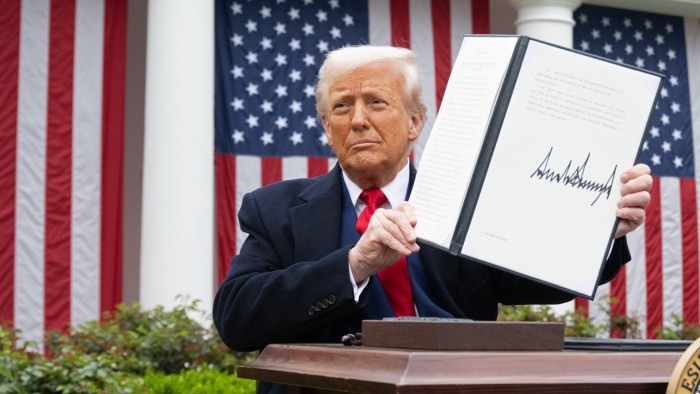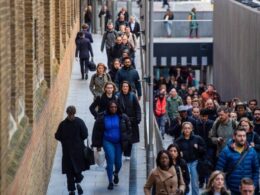Unlock the White House Watch newsletter for free
Your guide to what Trump’s second term means for Washington, business and the world
“Flooding the zone” was a strategy devised by Donald Trump’s first-term adviser Steve Bannon to generate such a blur of news that the media could not keep track. Trump has elevated it in his second term to a method of governing. The blizzard of executive orders in the first 100 days of Trump 2.0 outstrips, by far, even that in Franklin Roosevelt’s first term. Yet FDR inherited an economic crisis and set about reforms that changed America for the better. Trump inherited one of the strongest economies of any recent president. In trying to remake the US in his own image he has created crises that threaten immense long-term harm to the American republic, and its place in the world.
In Trump’s second term, efforts to flood the zone are making it hard for the courts, the opposition and even his supporters to keep up. Injunctions are halting some actions. But many have happened so quickly that they may be difficult or impossible to unpick: USAID largely shuttered and foreign aid slashed; thousands of federal workers fired; billions of dollars of research funding under threat.
Many core Maga supporters see the disruption, so far, as proof positive that this president is actually doing something. Indeed, while he offers no penetrating insights, Trump has a gift for articulating concerns that matter to a large chunk of Americans: reversing the hollowing out of communities; reducing bureaucratic bloat and excessive “woke”. His positions sometimes contain more than a kernel of truth: Europe has for too long paid too little towards its own defence.
Yet while the Trump team shares a revolutionary zeal, it has no single, coherent plan and is composed of sometimes warring camps. The leader favours his own erratic instincts over heeding advice. The result is that policy responses are frequently so excessive, warped, overhasty or ill-designed as to be counter-productive or doomed. Resetting trade with China is not achieved through a multilateral tariff war that risks severe shocks to global growth. Businesses will not invest in creating jobs in America without stability and predictability. Securing a durable peace in Ukraine cannot involve ticking off almost all items on Vladimir Putin’s wish list.
Potential constraints are, though, beginning to appear. One is the financial markets. As equities and, unusually, US Treasuries fell in tandem, Trump paused for 90 days his “reciprocal” tariffs on countries other than China. Further market turbulence last week prompted him to rein back attacks on Federal Reserve chair Jay Powell and signal further potential softening in his China trade stance.
Another is the courts, and some key institutions of American democracy. Harvard University and others are starting to band together to fight the White House’s McCarthyesque attempt to exert control over higher education. Top courts are starting to find against the president, with the US Supreme Court ruling unanimously that the administration must facilitate the release from custody of Kilmar Abrego Garcia, wrongly deported to an El Salvador jail. The White House says it cannot retrieve him, but repeated attempts to defy the courts may prompt a wider public backlash.
A final constraint may yet be American voters. Beyond his core supporters, polling suggests Trump’s approval ratings are slipping as voters fret about their pocketbooks and retirement plans — and signs of lawlessness such as the Abrego Garcia case. Though both parties in Congress have been woefully supine, the latest polls point to gains for the Democrats in the 2026 midterms. The danger must be that if Trump sees his popularity sliding, he could try to double down and follow an even more authoritarian path. As Trump 2.0 passes the 100-day mark, the real battle for American democracy may be only beginning.
Source link









